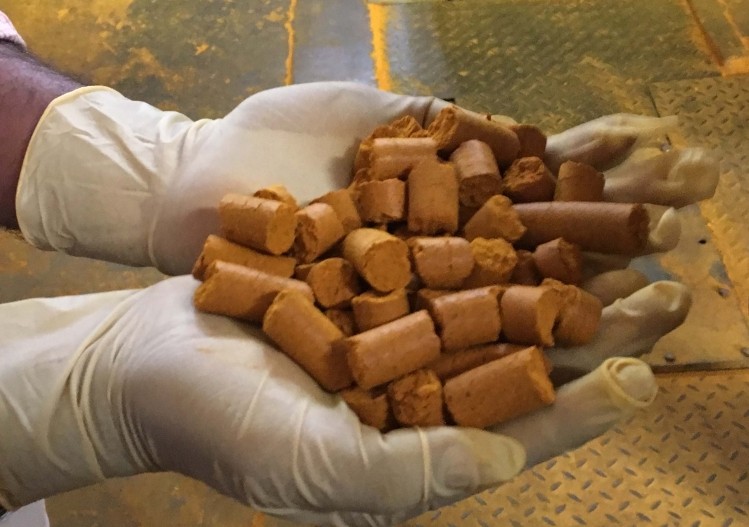GPA works to defend meaning of ‘prebiotic’ even as new ingredient technology muddies waters

Gut health has been a hot topic of research in recent years. This has seen a plethora of studies on dietary ingredients and their effects on gut health, many of which lie outside the traditional carbohydrate/dietary fiber sources of prebiotic ingredients.
Many ingredients now flying prebiotic flag
For example, a recent review of plant-based ingredients used to treat gut disorders in traditional European medicine settings mentioned constituents of turmeric, ginger and rosemary as having “potential gut microbiome modulatory effects.”
Anther recent study came out and baldly called out turmeric as a ‘prebiotic compound.’ Another study published just this week listed curcumin, quercetin, resveratrol, naringenin, and epigallocatechin-3-gallate as all having anti inflammatory and microbiome regulating effects that could be helpful to IBS patients.
With the wide array of ingredients being studies in this regard, and the wide array of foods in which these constituents can be found, the question becomes: Can just about anything you eat be considered a prebiotic?
GPA seeks to set boundaries
That dilution of the message is a concern for the category, said Len Monheit, executive director of the Global Prebiotic Association, which lists Deerland, ADM, Ardent Mills and Church & Dwight as members. Monheit said GPA has been working to both define and defend the turf for the category, so that consumers don’t become confused to the point where they tune the message out.
Monheit said GPA is not necessarily averse to broadening the category definition to include new ingredients, as long as those ingredients have data to justify what’s being said about them.
“We have seen a broadening of the term,” Monheit said. “It’s been broadened to include things like polyphenols and resistant starches, things beyond just the carbohydrates that are traditionally the foundation of the category.”
“All that is well and good. But we have also seen things like apple cider vinegar claiming to be a prebiotic. Acetic acid (the primary active constituent of these products) has not to my knowledge been verified as a prebiotic,” he added.
To try to put some boundaries on what is meant by ‘prebiotic,’ GPA has come up with its own definition. That reads:
“A prebiotic is a product or ingredient that is utilized in the microbiota producing a health or performance benefit.
“And a prebiotic effect is ‘a health or performance benefit that arises from alteration of the composition and/or activity of the microbiota, as a direct or indirect result of the utilization of a specific and well defined product or ingredient by microorganisms.’”
Category grows, as does consumer understanding
Monheit said the category has seen strong growth even though he does not have hard numbers ready to hand, as GPA does not yet conduct its own market research. Market research firm Grandview Research said the global market for these ingredients stood at $6 billion in 2021 and is projected to grow at a compound annual growth rate (CAGR) of 14.9% from 2022 to 2030.
Monheit said GPA does have consumer research, though, which reinforces how much end users have learned about the health effects of prebiotics. GPA conducted a recent survey with dedicated supplement users (who, granted, are better informed than the average consumer) that showed that just getting more fiber in their diets was only No. 4 on the list of reasons why they would choose a prebiotic product.
“Higher up the list were considerations such as immunity, to support the use of a probiotic, or overall microbiome health,” Monheit said.
Could ready-made prebiotics supplant off-the-shelf versions?
While GPA works to better define the category and make sure the playing field is level in terms of matching efficacious dosages to claims, new ingredient technologies are coming to the fore that could throw a wrench into that works, according to investment consultant Mike Bush, a member of the board of the International Probiotic Association. Bush has been part of several gut health ventures.
“Every time you turn around there’s a new prebiotic that claims to do some magical thing. There are a lot of people in the space but in the end I think the custom prebiotics will come to the fore,” he said.
One of the things that GPA has advocated for is ‘specificity,’ meaning that a developer has data to prove that their prebiotic ingredient can preferentially support the growth of a given probiotic organism or class of organisms. Bush said that idea is now becoming almost a plug-and-play option that could disrupt the category, for lack of a better term.
“There are developers out there who can you make a custom carbon carbon source that can claim to be a prebiotic without having to go to a supplier of a branded ingredient,” he said.
















